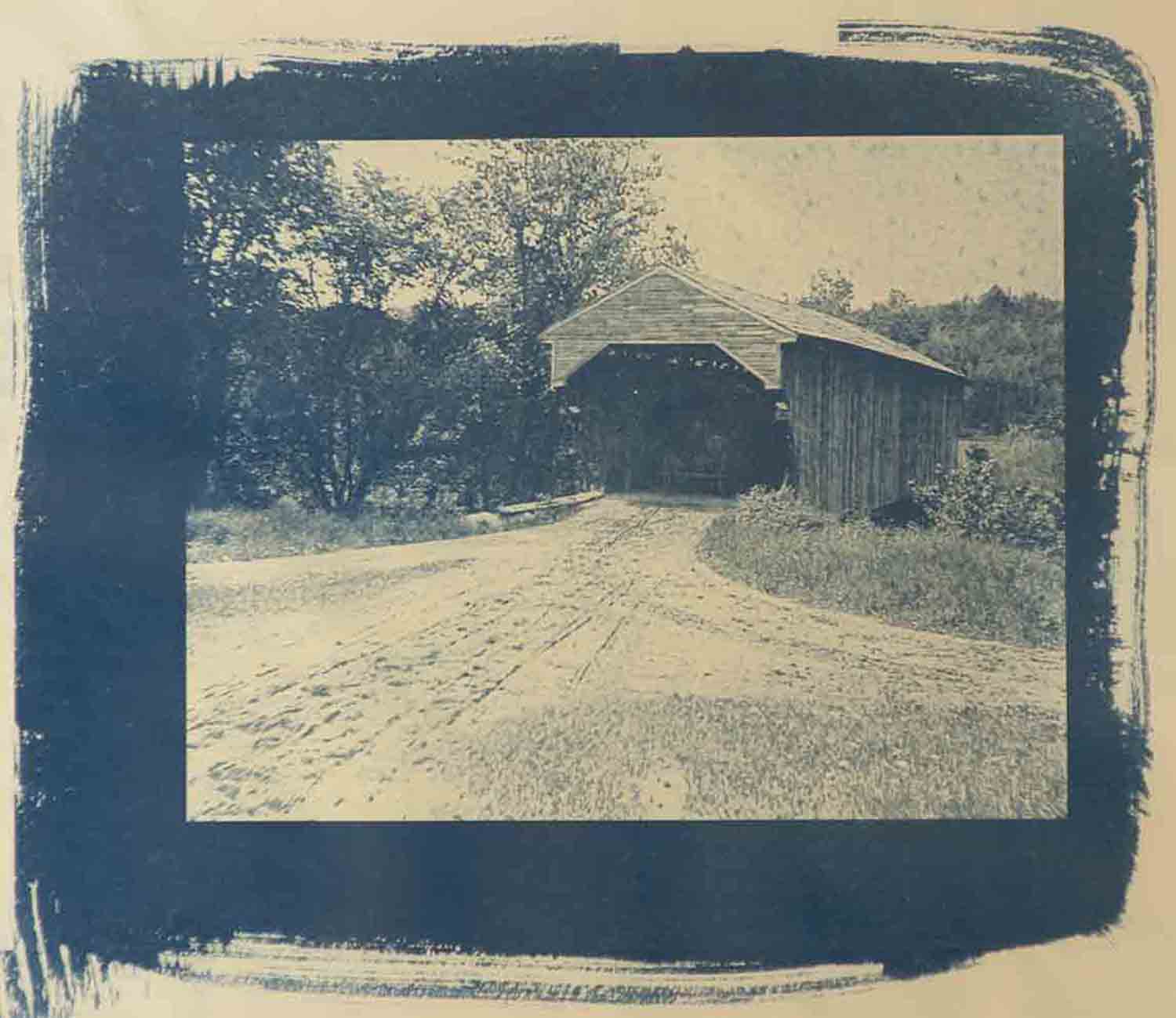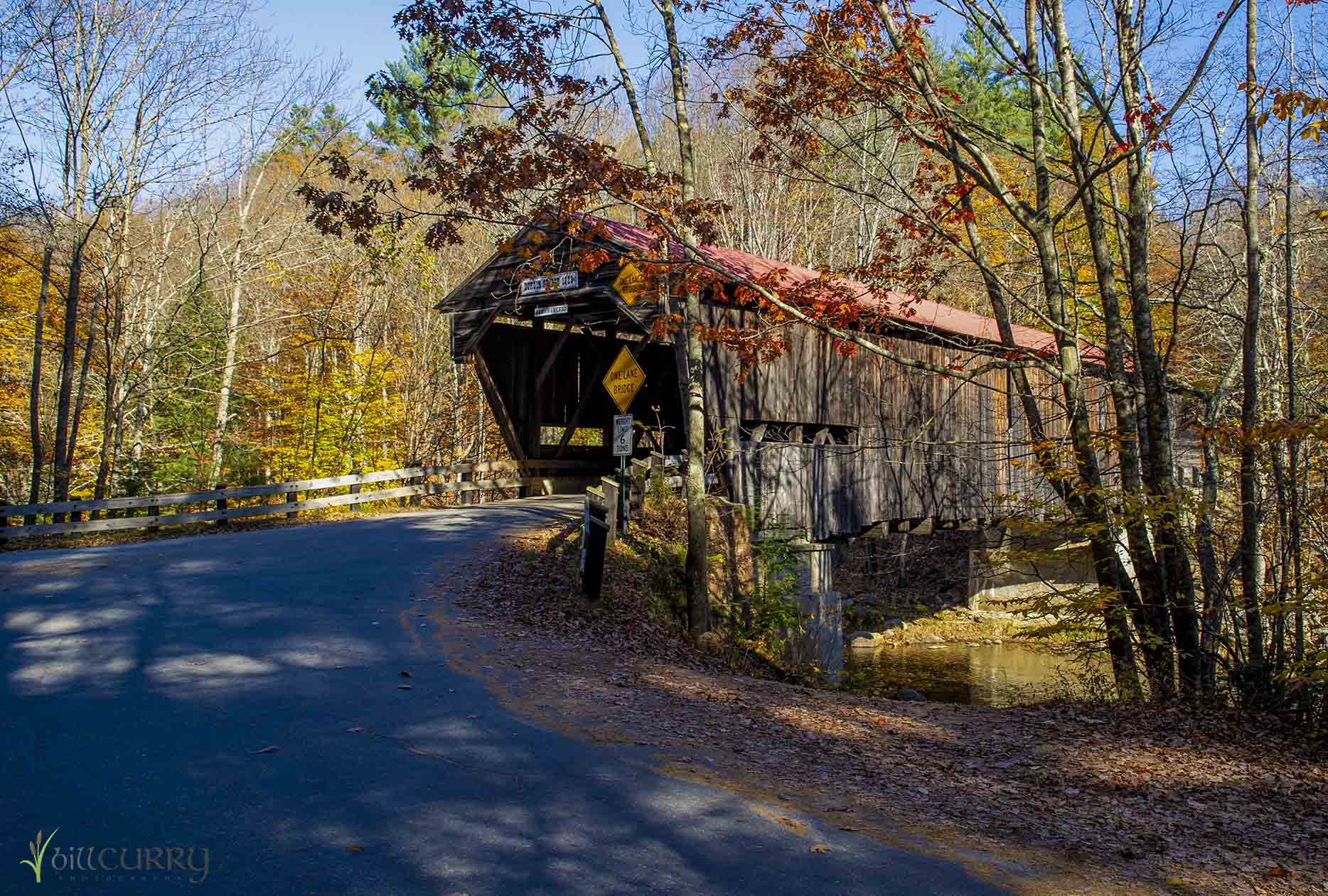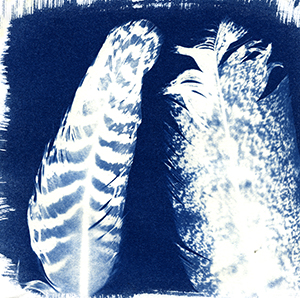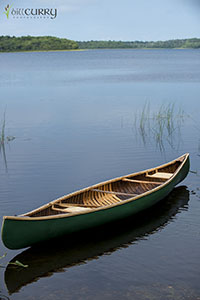
Durgin Bridge 1907
Cyanotype (Part Two)
The main image this week was taken in 1907, over 100 years ago, by my Great Grandfather Clarence Hoag. Graf, as he was known to the family, was an ardent amateur photographer, who loved recording both meaningful landscapes and family events that happened during his lifetime. His wife, my Great Grandmother Anna Scattergood Hoag, was an ardent genealogist and so I have not only inherited the same passions, I have inherited over 1000 images made by Graf, and every single one is documented as to date, place and what it’s of – including all the people shown thanks to Anna’s copious notetaking.
Reprinting the image at the top as a black and white photograph using my computer is something I’ve done, but in the late 1800’s and very early 1900’s, the images would not have been produced as I can replicate them digitally. For one thing this is all pre-colour, and in those days even the black and white prints were being played with as to emulsion surfaces and coatings on paper. As I described last week, one technique that came about in the mid-1800’s was Cyanotype, where paper is treated with an iron-based solution to make blue and white prints. At first this technique was scoffed at, especially by British printers, who thought “proper” photography only occurred on silver coated papers, but today, caynotypes are making a bit of a comeback because the processing of the paper once coated is done in plain water with household ingredients like vinegar and hydrogen peroxide added – a much more enviro-friendly process.
So, to be “historically correct”, I took a workshop on the cyanotype process, and here I am printing the old black and white negatives my great grandfather took as cyanotype photographs.
The image above is of Durgin Bridge in Sandwich, NH, where family members have lived for over 250 years! The bridge is a classic New England covered bridge, some 96 feet long and spanning the Cold River. It was built in 1869, and it is listed on the National Register of Historic Places in the US. The image below is one I took in 2013 when we visited the area, and as you can see, the bridge survives and has been re-enforced so that larger trucks and vehicles can cross it.
It’s great fun to be able to print in a style that is appropriate for the times, and yet also uses an environmentally friendly process – and I kind of think the cyanotypes have an interesting look to them.
I think my great grandparents would be pleased.
Durgin Bridge in 2013


























